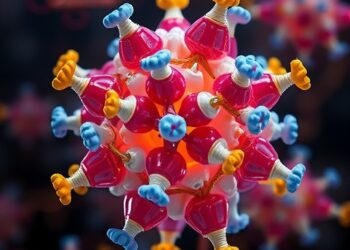Scientists have watched a molecule move across a graphite surface in unprecedented detail. It turns out this particular molecule moves like a Moon lander – and the insights hold potential for future nanotechnologies.
Scientists have watched a molecule move across a graphite surface in unprecedented detail. It turns out this particular molecule moves like a Moon lander – and the insights hold potential for future nanotechnologies.
Researchers have achieved a ground-breaking understanding of molecular movement thanks to this study from the University of Surrey and the Graz University of Technology, Switzerland.
Studying how molecules move is crucial for understanding chemical reactions and making nano-scale devices.
Dr Marco Sacchi, Associate Professor in Physical and Computational Chemistry at the University of Surrey, said:
“Our work has only scratched the surface of the complexities behind the self-assembly of non-planar molecules on graphite. It’s a step towards unravelling the subtleties of surface chemistry and its applications in nanotechnology.”
To unlock these secrets, scientists studied molecules of triphenylphosphine (PPh3). These three-pointed, propeller-like structures have a range of uses, from delivering drugs into cells to lithium batteries.
Using a unique combination of neutron spectroscopy and advanced computer simulations, the scientists observed how they behaved on a graphite surface.
The team was surprised to see PPh3’s remarkable motion – jumping and rotating like a spacecraft touching down on the lunar surface. This allowed them to move using surprisingly little energy.
Dr Anton Tamtögl, experimental physicist at Graz University of Technology, said:
“Exploring the intricate world of molecular self-assembly on graphite surfaces has been an exciting journey.
“The experimental results have unveiled a captivating dance of molecules, providing us with a deeper understanding of surface dynamics and opening up new horizons for materials science and nanotechnology.”
The results could lead to new advanced materials or more efficient ways of making medicines and nanotechnology.
The study is published in the journal Communications Chemistry.
ENDS
Journal
Communications Chemistry
Method of Research
Experimental study
Article Title
Molecular motion of a nanoscopic moonlander via translations and rotations of triphenylphosphine on graphite
Article Publication Date
6-Apr-2024
COI Statement
The authors declare no competing interests.




